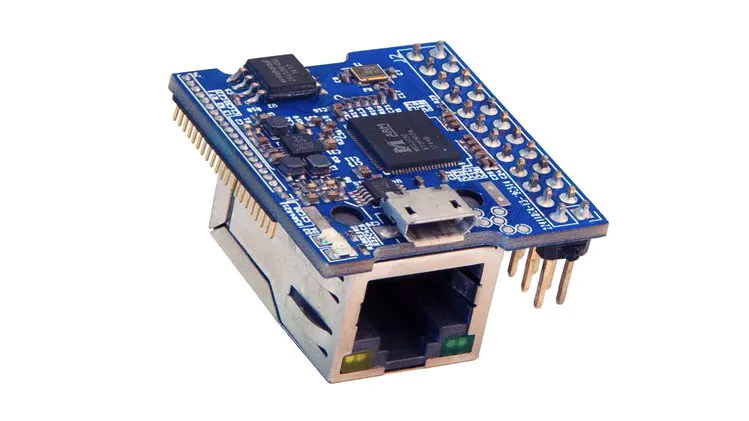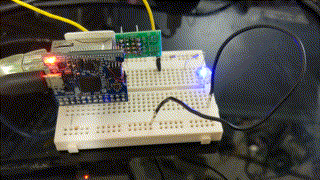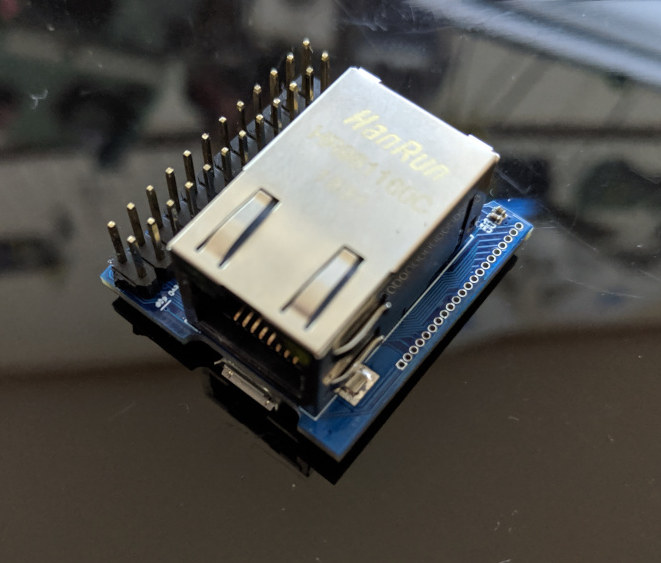There are plenty of tiny and compact Arm Linux SBC on the market from NanoPi NEO to Raspberry Pi Zero or Rock Pi S. But Daniel Palmer has been able to design an even smaller board – BreadBee – based on MStar MSC313E Cortex-A7 SoC since the processor also embeds 64MB RAM, or enough to run embedded Linux.
- SoC – MStar MSC313E Arm Cortex-A7 processor @ ~1.0 GHz with NEON, FPU, 64MB DDR2
- Storage – 16MB SPI NOR flash
- Networking – 10/100M Ethernet (RJ45)
- USB – 1x Micro USB 2.0 port
- Expansion
- 24-pin dual-row header (2.54mm pitch) with SPI, I2C, 4x 10-bit ADC, 3x UART, GPIOs
- 21-pin header (1.27mm pitch) with SD/SDIO, USB 2.0, GPIOs
- Misc – RTC, Watchdog timer
- Power Supply – 5V via micro USB port
- Dimensions – 32 x 30mm
Despite MStar MSC313E being a camera processor, the camera interface does not seem exposed in the board, so it looks to be designed to control I/Os over Ethernet. There’s no WiFi for now, but there may eventually be a future model that replaced the Ethernet jack with an Ampak WiFi module.
Daniel also considered the similar Allwinner V3s processor, but the single SPI interface would have been utilized by NOR flash, and MSC313E has multiple SPI interfaces. He ported Linux 5.3 to the board with most features working, but still several requiring more work including the MUSB USB device controller, H.264 encoder, Audio ADC/DAC, and Crypto engine among others. The hardware has been designed in KiCad, and you’ll find hardware resources files, a project log, and links to U-Boot, Linux, and Buildroot repositories on Github.

BreadBee board will soon be launched on Crowd Supply, and the cost to make the board is said to be around $10 in small quantities. I think Daniel is a regular reader and commenter on CNX Software and may be able to answer any questions here.
Via Hackster

Jean-Luc started CNX Software in 2010 as a part-time endeavor, before quitting his job as a software engineering manager, and starting to write daily news, and reviews full time later in 2011.
Support CNX Software! Donate via cryptocurrencies, become a Patron on Patreon, or purchase goods on Amazon or Aliexpress. We also use affiliate links in articles to earn commissions if you make a purchase after clicking on those links.





